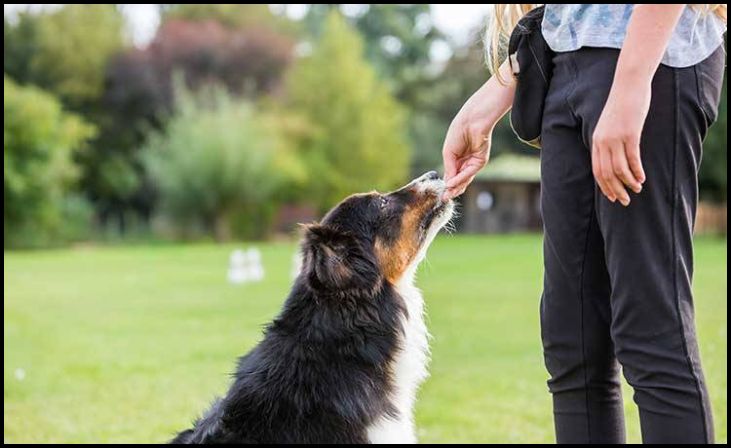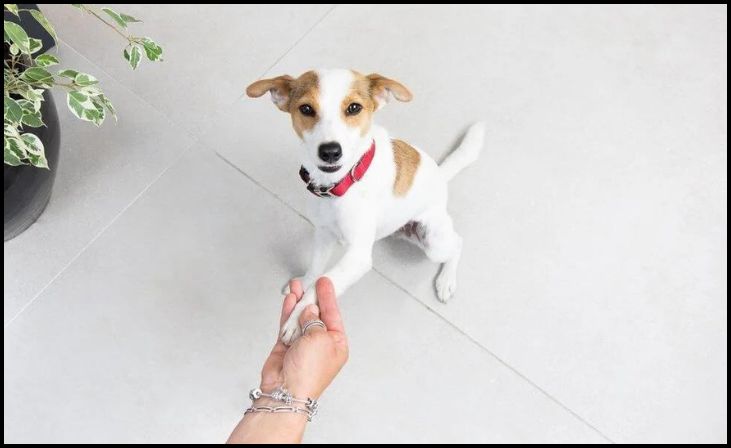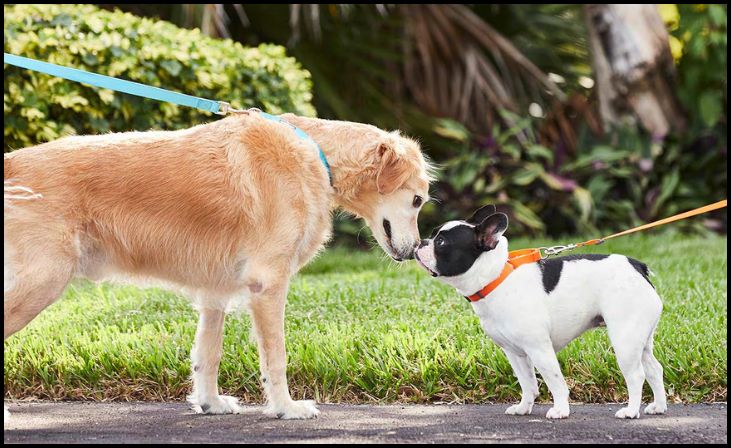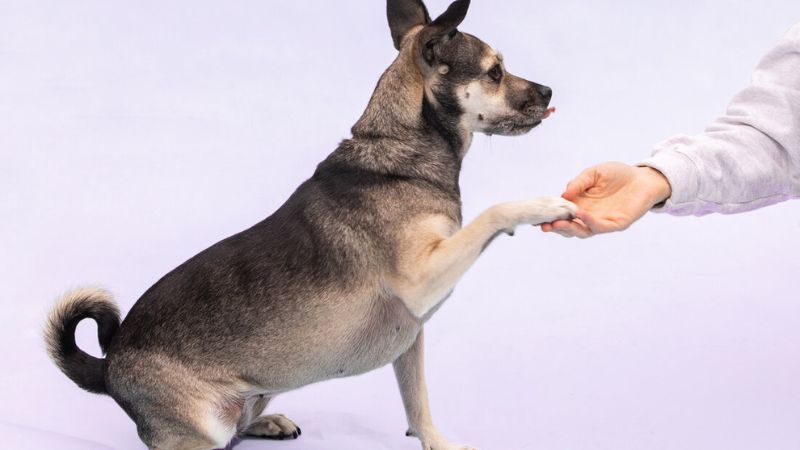Training With Dogs is an essential part of ensuring they are well-behaved and happy members of your household. It’s not just about teaching commands but also about building a strong bond and establishing clear communication between you and your furry friend. Understanding the best practices for dog training can make the process smoother and more effective, resulting in a well-adjusted pet. This article covers nine best practices for training dogs, focusing on positive reinforcement, consistency, and understanding your dog’s unique needs.
9 Best Practices For Training With Dogs
1. Positive Reinforcement
Positive reinforcement is widely regarded as the most effective and humane method of dog training. This technique involves rewarding your dog for desirable behavior to encourage repetition of that behavior. Rewards can include treats, praise, or playtime. By associating good behavior with positive outcomes, dogs are more likely to repeat these actions. It’s crucial to be immediate and consistent with rewards so that your dog makes a clear connection between their behavior and the reward. Avoid using punishment or negative reinforcement, as this can lead to fear, anxiety, and aggression, ultimately undermining the training process.

2. Consistency is Key
Consistency is critical in dog training. Dogs learn best when they receive the same signals and commands repeatedly and consistently. This means using the same words, tone of voice, and hand signals for each command. Inconsistent commands can confuse your dog, making it difficult for them to understand what is expected of them. Additionally, consistency should extend to all family members involved in the training process. Everyone should be on the same page, using the same techniques and commands, to avoid confusing the dog. Consistency helps reinforce learning and makes the training process more efficient and effective.
Read Also: 9 Indoor And Outdoor Exercise Ideas For Dogs
3. Start Training Early
It’s best to start teaching your dog early on. Puppies are particularly receptive to learning and can begin training as early as eight weeks old. Training kids early on helps them form good habits and stops them from developing bad ones. It also allows for socialization with other dogs and people, which is crucial for a well-rounded temperament. While it’s never too late to start training an older dog, beginning early can make the process smoother and more effective. Puppy classes are an excellent way to kickstart training in a structured environment, providing both education and socialization opportunities.
4. Keep Training Sessions Short and Fun
Dogs have relatively short attention spans, so it’s essential to keep training sessions brief and engaging. Sessions should ideally last between 5 to 15 minutes, depending on your dog’s age and attention span. Long practices that don’t happen very often work less well than short ones that do. Incorporate play and praise into the sessions to keep your dog motivated and interested. Ending each session on a positive note, with a successful command and a reward, will help your dog associate training with positive experiences. Remember, training should be a fun and bonding activity for both you and your dog.
5. Use Clear and Simple Commands
When training your dog, use clear, simple commands that are easy for them to understand. Single-word commands such as “sit,” “stay,” “come,” and “down” are most effective. Avoid using long sentences or phrases that might confuse your dog. Consistency in the words and tone you use is crucial, as dogs rely on these cues to understand what you want from them. Additionally, be patient and give your dog time to process and respond to the command before repeating it. Clear and straightforward communication helps your dog learn more quickly and effectively.

6. Understand Your Dog’s Body Language
Understanding your dog’s body language is vital for effective training. Dogs communicate a lot through their posture, facial expressions, and movements. Being able to read these signals can help you gauge your dog’s comfort level, stress, and readiness to learn. For example, a wagging tail can indicate happiness, while a tucked tail might suggest fear or anxiety. Recognizing when your dog is feeling stressed or overwhelmed allows you to adjust your training approach accordingly. Responding to your dog’s body language can prevent negative experiences and ensure that training sessions are positive and productive.
7. Gradual Progression and Patience
Training a dog takes time and patience. It’s important to progress gradually, starting with basic commands and slowly introducing more complex behaviors. Each dog learns at their own pace, so be patient and avoid rushing the process. Enjoy the little wins and know that setbacks are a normal part of the road. Consistent, patient training will yield the best results over time. If your dog is having trouble with a certain order, you might want to break it up into smaller steps that it can handle. This gradual progression helps build a strong foundation of skills and confidence in your dog.
Read Also: 9 Indoor And Outdoor Exercise Ideas For Dogs
8. Socialization
Socialization is a critical aspect of dog training that involves exposing your dog to a variety of people, environments, and other animals. Proper socialization helps prevent fear and aggression, promoting a well-adjusted and confident dog. Begin socialization early and make it a regular part of your dog’s routine. Positive experiences with new sights, sounds, and smells can greatly enhance your dog’s ability to adapt to different situations. Puppy socialization classes are a great way to start, providing controlled environments where puppies can interact with each other and learn appropriate social behaviors.

9. Seek Professional Help When Needed
Sometimes, despite your best efforts, you may encounter challenges in training your dog. If you’re struggling with particular behaviors or feel overwhelmed, seeking professional help can be beneficial. Professional dog trainers or behaviorists can provide expert guidance and personalized training plans tailored to your dog’s needs. They can also address specific issues such as aggression, anxiety, or advanced training requirements. Don’t hesitate to seek help when needed, as professional support can significantly impact your dog’s training success and overall well-being.
Conclusion
Training your dog is a rewarding experience that strengthens your bond with your furry companion. You can ensure effective and enjoyable training by following these nine best practices—positive reinforcement, consistency, starting early, keeping sessions short and fun, using clear commands, understanding body language, progressing gradually, socializing, and seeking professional help when needed. Remember, patience and persistence are key. With the right approach, you can raise a well-behaved, happy, and confident dog.
FAQs
How long does it take to train a dog?
The time it takes to train a dog varies depending on the dog’s age, breed, and individual temperament. Basic commands can take a few weeks to a few months, while more advanced training can take longer. Consistency, patience, and positive reinforcement are essential for effective training.
What if my dog doesn’t respond to positive reinforcement?
If your dog doesn’t respond to positive reinforcement, it’s essential to ensure that the rewards you’re offering are truly motivating for them. Try different types of treats, toys, or praise to find what works best. If you continue to struggle, consider consulting a professional trainer for personalized advice.
Can older dogs be trained effectively?
Yes, older dogs can be trained effectively. While it may take more time and patience compared to training a puppy, older dogs are capable of learning new behaviors and commands. Positive reinforcement and consistency are crucial for training older dogs, and professional guidance can be beneficial if needed.



